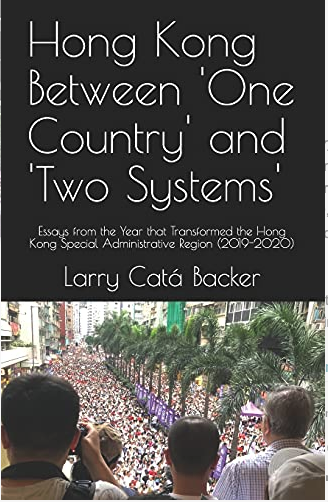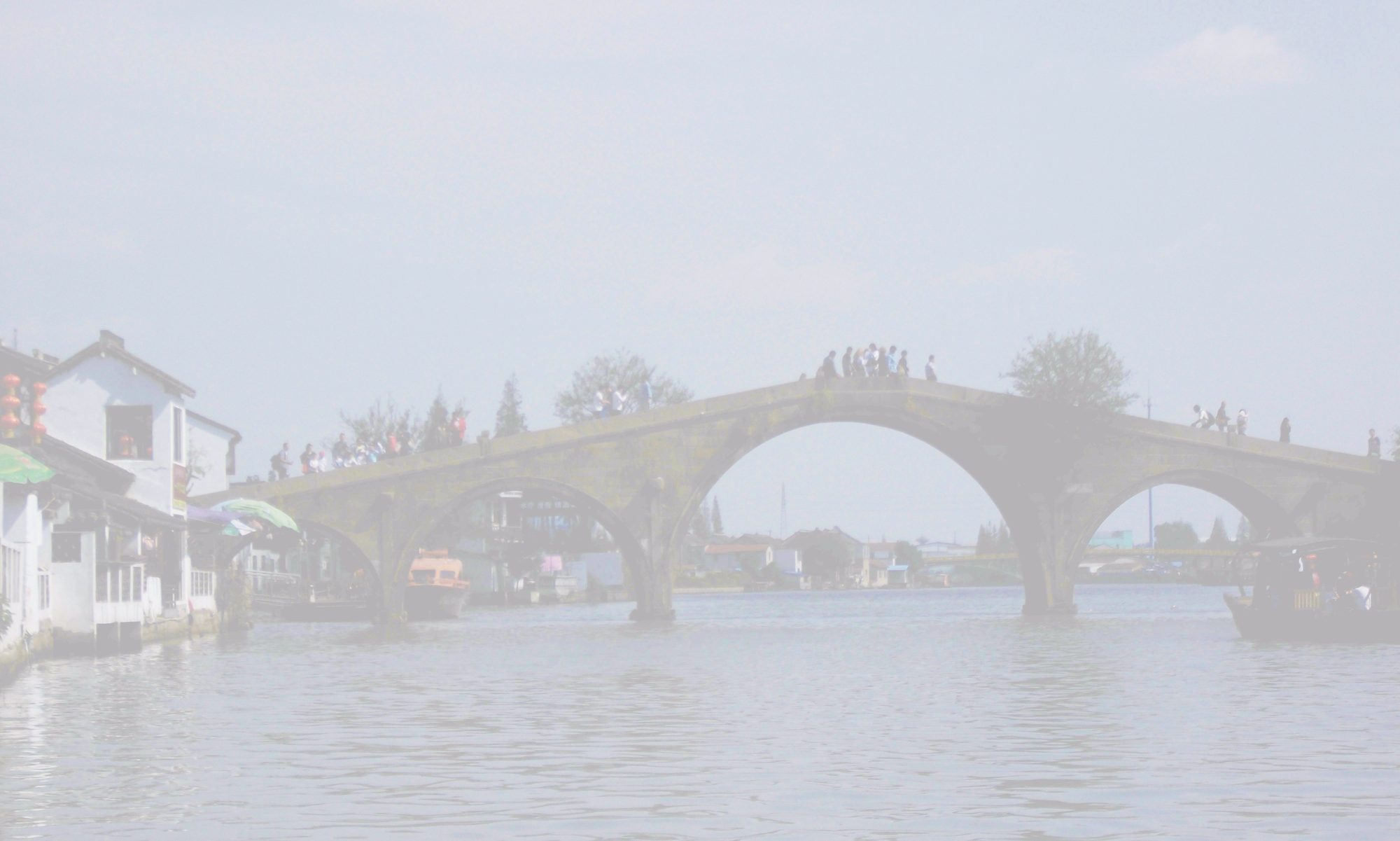
ISBN: 978-1-949943-03-0 (ebook); 978-1-949943-05-4 (paperback)
Buy this eBook:


Paperback Purchase Through Amazon
LINK TO PAPERBACK ORDER PAGE

About this Book
Hong Kong Between “One Country” and “Two Systems” critically explores the battle of ideas that started with the June 2019 anti-extradition law protests and ended with the enactment of the National Security and National Anthem Laws a year later. At the center of these battles was the “One Country, Two Systems” principle. By June 2020, the meaning of that principle was highly contested, with Chinese authorities taking decisive steps to implement their own understanding of the principle and its normative foundations, and the international community taking countermeasures. All of this occurred well before the 2047 end of the 1985 Sino-British Joint Declaration (中英联合声明) that had been the blueprint for the return of Hong Kong to China. Between these events, global actors battled for control of the narrative and of the meaning of the governing principles that were meant to frame the scope and character of Hong Kong’s autonomy within China. The book critically examines the conflict of words between Hong Kong protesters, the Chinese central and local authorities, and important elements of the international community. This decisive discursive contest paralleled the fighting for control of the streets and that pitted protesters and the international community that supported them against the central authorities of China and Hong Kong local authorities. In the end the Chinese central authorities largely prevailed in the discursive realm as well as on the streets. Their victory was aided, in part by the COVID-19 pandemic of 2020. But their triumph also produced the seeds of a new and potentially stronger international constitutional discourse that may reduce the magnitude and scope of that success. These essays were written as the events unfolded. Together the essays analytically chronicle the discursive battles that were fought, won and lost, between June 2019 and June 2020. Without an underlying political or polemical agenda, the essays retain the freshness of the moment, reflecting the uncertainties of the time as events unfolded. What was won on the streets of Hong Kong from June to December 2019, the public and physical manifestation of a principled internationalist and liberal democratic narrative of self-determination, and of civil and political rights, was lost by June 2020 within a cage of authoritative legality legitimated through the resurgence of the normative authority of the state and the application of a strong and coherent expression of the principled narrative of its Marxist-Leninist constitutional order. Ironically enough, both political ideologies emerged stronger and more coherent from the conflict, each now better prepared for the next.
Access Free: Book Preface and Selected Chapters
Access to selected chapters along with the Book Front Matter (Preface and Table of Contents)
Meet the Author: Video Conversations of the Book With Larry Catá Backer and Matthew McQuilla
Larry Catá Backer and Matthew McQuilla engage in short conversations about the book, going through its contents from a general discussion around its Preface to more detailed conversation about each of the essays.
Book Launch 13 July 2021
Please join us for the launch of the book, which is scheduled from 1000 to Noon on 13 July 2021. Registration is required but free. We hope to make the video recording of the event available. ACCESS REGISTRATION AND BOOK LAUNCH EVENT INFORMATION HERE.
Description of Contents
The essays are organized chronologically into six parts. They are critical essays in the sense that they try to make sense of events as they are occurring.
Part I (Epilogue as Introduction) starts at the end of the story. It uses a fairly rare statement endorsed by a substantial majority of the representatives of United Nations Human Rights special procedures calling for the development of decisive measures to protect human rights in the face of the enactment by Chinese authorities of a National Security Law for Hong Kong to situate the end of the story that began with exuberant protests on 9 June 2019 and ended with the imposition of a legal order that effectively reshaped the character of the Hong Kong political order. It does this from the perspective of one of the international community–perhaps among the actors most adversely affected by the story that is Hong Kong between June 2019 and July 2020.
Part II consists of eleven chapter essays. These essays take the reader from the beginning of the protests in June 2019 to the end of August 2019. The essays serve as an analytical witness to the development of the initial phase of the Hong Kong protests. Step by step, as it occurred, it considered the escalations of ambitions and tactics of the protesters, the growing intransigence of local officials, and the start of what would become an elaborate and largely effective counter position of the Chinese central authorities. Much of what is developed in these early weeks provides the foundation for everything that develop thereafter. Positions that have their start, sometimes quite tentatively, in these early weeks, later emerge as powerful strategies in the months that follow.
Part III consists of seven essays. The essays critically chronical what then appeared to be the critical events taking place from the beginning of September to the end of November 2019. These take the reader through the next phase of development, one in which initial positions are fully developed and hardened. Here one sees fully developed the ideological position of the central authorities that in retrospect were faithfully memorialized in the National Anthem Law, the National Security Law, and most recently in the amendments to the Election rules in the Hong Kong Basic Law in March 2021. At the same time, one encounters here the maturing of an aligned position of the various groups of protesters that sought to deepen the internationalization of its movement and preserve its efforts to permanently protect a measure of liberal democratic order in Hong Kong. Lastly the manifestation of international response, grounded first in the narrow strictures of the Sino-British Joint Declaration and thereafter in general fundamental principles of self-determination and the international civil and political rights of coherent political communities, is also well developed in this period.
Part IV then considers the relatively short period of stalemate between December 2019 and April 2020 in three essays that cover the apex of protester power in December 2019 and January 2020, and then the stalemate pause imposed by the realities of the worldwide COVID-19 pandemic. One moves here from the unabated storm of protest to the opportunity that pandemic provides local and national authorities to break that stalemate in their favor. It was during this period that the stakes around the proper conceptualization of the One Country Two Systems principle became clear. On the one side were the central authorities who now had fully developed the construct of the principle as a means of permitting autonomy within the discretionary authority of the state. On the other were the protesters and the international community who now saw in One Country Two Systems a principle of divided sovereignty in which the political choices of the Hong Kong community could be protected against encroachment by the central authorities, one based on international liberal democratic and human rights principles.
Part V then chronicles the end of the protest movement and the emergence of a “new era” Hong Kong between May and July 2020. Its seven essays critically chronicle the way that the central authorities drove events from May 2020, in a way that paralleled the way that protesters drove events in June through September 2019. This starts with the announcement of an intention to impose a National Security Law, through the imposition of first a National Anthem Law and then ending with the adoption of the National Security Law itself. It considers the critical importance of the development of the mechanics of a patriotic front as a means of dividing and managing the people of Hong Kong, and the relatively little opposition that the central authorities faced in successfully realizing its objectives.
The single essay that makes up Part VI serves as the after-word of the story that was told in chapters two through thirty. This is not just the end of the story of the protests in Hong Kong but also the beginning of the story of Hong Kong as a more integrated part of the Pearl River area of China. No longer an international city in the sense of internationally recognized and protected legal autonomy from its territorial sovereign, Hong Kong now rejoins the nation as a Chinese city with substantial international connections. Beyond that, Hong Kong’s future is now far more closely aligned with that of the Chinese heartland and with the vision of China’s central authorities for the nation as a whole.
Contents
Preface pp. ix-xxiv (Access Free)
The Essays
Part I: Epilogue as Introduction
Chapter 1: Saturday, 27 June 2020; An Epilogue as Introduction: “UN Experts Call for Decisive Measures to Protect Fundamental Freedoms in China” [联合国专家呼吁采取果断措施保护中国境内的基本自由] and Homesickness in International Human Rights Law pp 1-14
Part II: The Early Phases of the Protests
Chapter 2: Saturday,15 June 2019; The Clash of Empires? Playing With Fire in the Shadow of the Umbrella Movement pp. 15-28 (Access Free)
Chapter 3: Monday 29 July 2019; Mend-Break (Di Xi 抵巇): The Chinese Position on the Situation in Hong Kong; Statement of the Hong Kong and Macau Affairs Office of the State Council [国务院港澳办新闻发言人介绍对香港当前局势的立场和看法 ] pp. 29-40
Chapter 4: Sunday 4 August 2019; Official and Unofficial Statements of the Political Authorities pp. 41-56
Chapter 5: Monday 5 August 2019; Further Statement from the Authorities on the Situation in Hong Kong: 坚决支持香港警方严正执法制止暴力 [“Strongly Support the Hong Kong Police to Strictly Enforce the Law and Stop Violence”] pp. 57-66
Chapter 6: Tuesday 6 August 2019; Thoughts on Albert Chen Hung-yee 陳弘毅 (Hong Kong U.): 理性溝通的困境 [“The Dilemma of Rational Communication”] pp. 67-72
Chapter 7: Wednesday 7 August 2019; “Stop the Storm and Restore Order!” [“止暴制乱、恢复秩序”!]: A Warning About Criminal Elements, the Black Hand (“黑手”), and the Corruption of the Patriotic Education of the Young pp. 73-100
Chapter 8: Thursday 8 August 2019; Assessing (Quan 權) the “Black Hand” (黑手) of Foreign Interference and the Justification for Intervention pp. 101-116
Chapter 9: Friday 9 August 2019; Thoughts on Violent Popular (Mob?) Action Against the Solid Virtues of Prosperity and Stability; Considering Albert Chen Hung-yee 陳弘毅 Essay on the Situation in Hong Kong Part 2: 一國兩制的博弈 [“The Game of One Country Two Systems”] pp. 117-124 (Access Free)
Chapter 10: Tuesday August 13, 2019; Dividing the Baby, and Killing it, Too; Press Briefing Note from the United Nations High Commissioner for Human Rights [关于中国香港的新闻发布会 联合国人权事务高级专员发言人 ] pp. 125-130
Chapter 11: Friday 16 August 2019; Surya Deva on the International Human Rights Implications of the Situation in Hong Kong pp. 131-142
Chapter 12: Monday 19 August 2019; Resist-Reconcile (忤合 Wuhe): “Opinions of the CPC Central Committee and the State Council on Supporting Shenzhen’s Pioneering Demonstration Zone with Chinese Characteristics” [中共中央国务院关于支持深圳建设中国特色社会主义先行示范区的意见 (二〇一九年八月九日)] pp. 143-152 (Access Free)
Chapter 13: Thursday 22 August 2019; Reflections on Zheng Yongnian: “The Capital of Protests” Who Controls Hong Kong?” [郑永年:“抗议之都” 谁主香港?] pp. 153-168
Part III: The Hardening of Positions Now More Fully Developed
Chapter 14: Monday 2 September 2019; ‘Two Systems’ Internationalism Against ‘One Country’ Nationalism–Reflections on the G7 Declaration and the (Re)Construction of New Era pp. 169-178
Chapter 15: Tuesday 18 September 2019; “Two Systems” Internationalism: Congressional-Executive Commission on China Hearings on “Hong Kong’s Summer of Discontent and U.S. Policy Responses” pp. 179-190
Chapter 16: Tuesday 17 September 2019; Black Hand [黑手]/ Red List [红名单]: China, Law and the Foreigner; Mutual Engagements on a Global Scale pp- 191-220
Chapter 17: Wednesday 25 September 2019; The “Five Demands,” the Legitimacy of Force, and the Constitution of the “Two Systems” Principle pp. 221-232
Chapter 18: Sunday 20 October 2019; Students at the Center and the University Response–CUHK Vice-Chancellor and President Professor Rocky S. Tuan’s Open Letter 中大校長段崇智教授公開信 pp. 233-246
Chapter 19: Sunday, October 20, 2019; Shirley Ze Yu on Hong Kong and the Construction of Post-Global Empire pp. 247-254
Chapter 20: Monday 18 November 2019; Open-Shut (bai he 稗閤) Strategies: 习近平;止暴制乱 恢复秩序是香港当前最紧迫的任务 [Xi Jinping; Stopping the storm and restoring order is Hong Kong’s most urgent task at present] pp. 255-262 (Access Free)
Part IV: Stalemate
Chapter 21: Monday 30 December 2019; Stalemate: The Storm Continues Unabated pp. 263-268
Chapter 22: Monday 30 March 2020; The COVID-19 Factor pp. 269-274
Chapter 23: Sunday 19 April 2020; The COVID-19 Accelerator Effect: The Situation in Hong Kong and the Virtual Conflict Between the United States and China pp. 275-290
Part V: The End of the Protest Movement
Chapter 24: Saturday 23 May 2020; On Resolutely Resolving Contradiction 《全国人民代表大会关于建立健全香港特别行政区维护国家安全的法律制度和执行机制的决定(草案)》 (“Decision of the National People’s Congress on Establishing and Improving the Hong Kong Special Administrative Region’s Legal System and Implementation Mechanism for Maintaining National Security (Draft)”) pp. 291-318
Chapter 25: Tuesday 26 May 2020; For Whom is Hong Kong Home? “One Country-Two Systems,” the National Security Law and the Development of a Patriotic Front pp. 319-330 (Access Free)
Chapter 26: Sunday 31 May 2020; The “Four Great Errors” and the Stratagems of Meaning Making pp. 331-342
Chapter 27: Monday 1 June 2020; Inaugurating the New Era for Hong Kong with the National Security Law and the Cancellation of the Tienanmen Vigil pp. 343-354
Chapter 28: Thursday 4 June 2020; The SAR Government Passes the National Anthem Ordinance (國歌條例草案) Reinforcing the Architecture of Two Systems WITHIN One Country pp. 355-374 (Access Free)
Chapter 29: Friday 5 June 2020; Marco Rubio, the Congressional-Executive Commission on China, and the International Response Creating the Inter-Parliamentary Alliance on China (對華政策跨國議會聯盟对华政策跨国议会联盟対中政策に関する列国議会連盟) pp. 375-386
Chapter 30: Wednesday 1 July 2020; Fundamental Principles (Fu Yan 符言): On the Ideological Thrust of the Draft “Law of the People’s Republic of China on the Maintenance of National Security” 《中华人民共和国香港特别行政区维护国家安全法(草案)》 pp- 387-398
Part VI: The New Era Begins for Hong Kong Under a “Two Systems Within One Country” Principle
Chapter 31: Tuesday 28 July 2020; After-Word: The Clean Up Begins in Earnest: The End of the 2014-2020 Protest Movement and the Emergence of New Era Hong Kong pp. 399-414
Index
Index pp. 415-418

